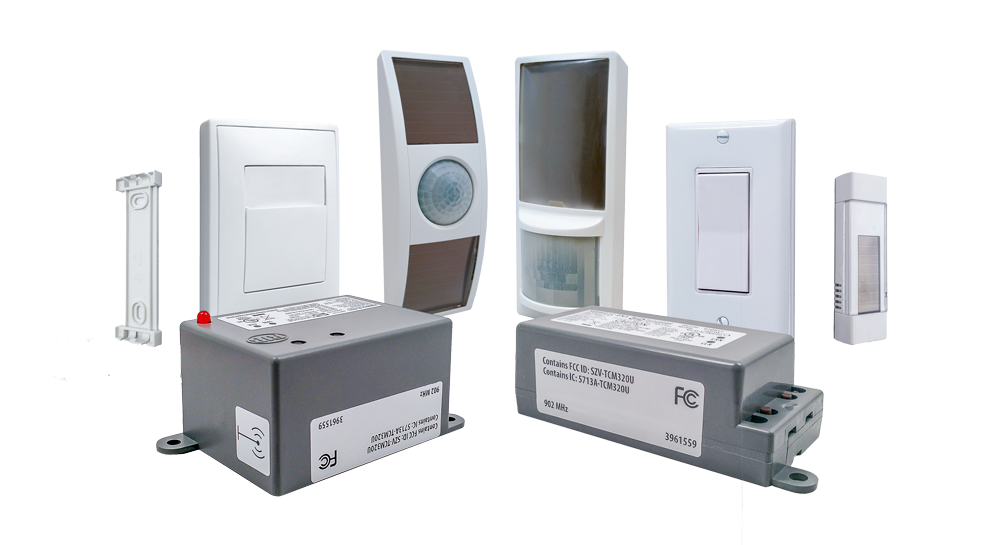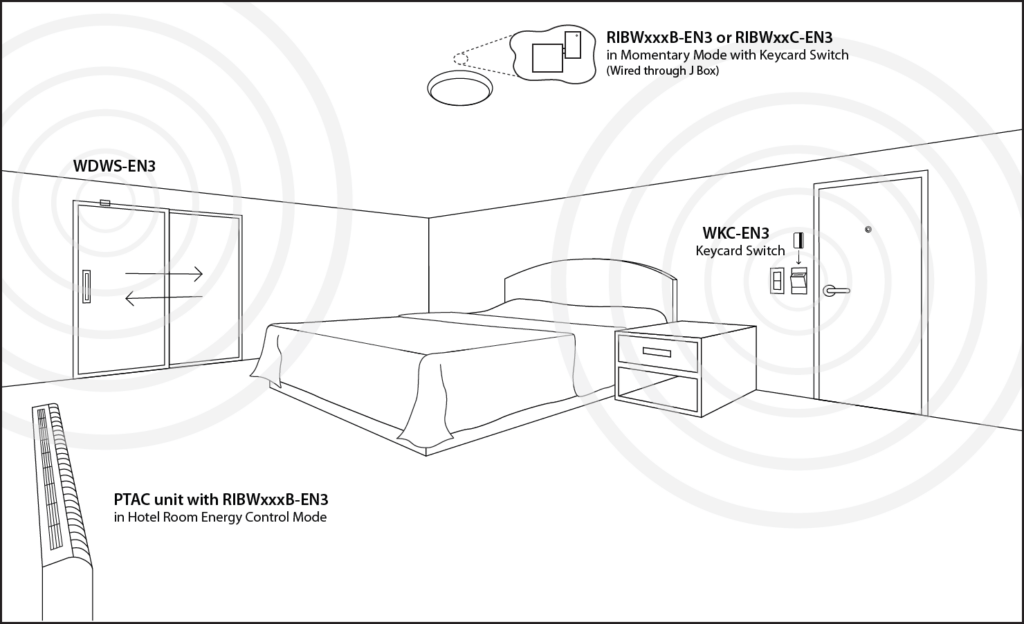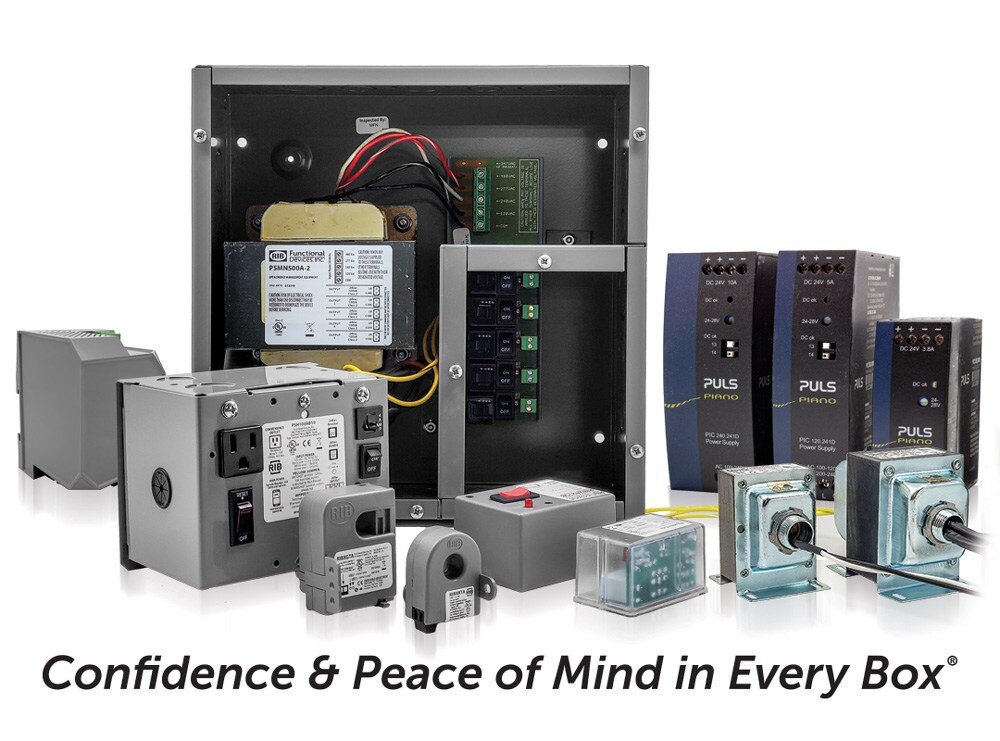
Wireless building automation devices are changing the way facilities operate, offering smarter, more flexible solutions for controlling lighting, HVAC, and other systems. By eliminating the need for extensive wiring, these devices can be installed and adapted easily, making them ideal for retrofits, expansions, and spaces where running new cables is difficult or expensive.
Additionally (and perhaps surprisingly), wireless devices can also reduce energy usage. Saving energy in a building offers a wide range of benefits, from lowering utility bills to reducing environmental impact to easing demand on the power grid. On top of these advantages, many cities, states, and municipalities now require energy-saving measures as part of building codes, making efficient controls not just a smart choice but a necessary one for compliance.
This blog will explore how wireless devices can help reduce energy use, highlighting the areas where you can achieve the greatest savings. We’ll also showcase Functional Devices’ products designed for wireless control and explain some common applications. To learn more about our wireless options, browse our line or give us a call.
How Wireless Devices Boost Energy Efficiency
Wireless building automation devices can significantly reduce energy usage by enabling more precise, real-time control over a building’s systems. Unlike traditional wired systems, which may rely on fixed schedules or manual overrides, wireless devices can respond instantly to occupancy, daylight levels, temperature changes, and other environmental factors. This dynamic control ensures that energy is only used when and where it’s needed, minimizing waste.
In addition, wireless devices simplify system upgrades and expansions, making it easier to implement energy-saving strategies without costly rewiring. Facility managers can quickly add occupancy sensors, smart thermostats, or lighting controllers to optimize performance in individual zones.
By providing granular control and automated scheduling, wireless building automation helps buildings run more efficiently, reduces utility costs, and supports sustainability goals. Over time, these small adjustments add up to significant energy savings across the facility.
Greatest Energy Savings: HVAC and Lighting
The most significant opportunities for energy savings in a building typically come from two key systems: Heating, ventilation, and air conditioning (HVAC) and lighting. HVAC systems account for a large portion of energy use in commercial and residential buildings, meaning small efficiency improvements can lead to substantial savings.
Lighting, especially in large facilities, also represents a major energy expense. By integrating smart lighting controls, occupancy sensors, and energy-efficient equipment, building owners can enhance comfort, meet code requirements, and enjoy long-term financial benefits while reducing their carbon footprint.
Wireless Products Offered by Functional Devices
Functional Devices manufactures EnOcean wireless products that can make these energy-saving applications a reality. These wireless products can offer a lower entry cost than a wired solution since a substantial portion of the cost for such projects is running power and signaling conductors. The following are common applications for which we receive requests and technical support questions.
Occupancy-Based Lighting Control
Problem: Leaving lights on in an unoccupied office or meeting room can be a big waste of electricity. No one remembers to turn them off every time.
Solution: Our EnOcean wireless lighting products can pair with an occupancy sensor to control lighting in two different modes.
The first mode, Auto ON, allows control of the lighting by the sensor alone. When occupancy detection occurs, the lighting load turns ON and remains ON until thirty minutes after the last motion detection.
The other mode, Manual ON-Auto OFF, allows a wireless rocker switch to also link to the control device. In this mode, the rocker switch can control the ON/OFF function of the light load. The occupancy sensor will turn the lighting load OFF thirty minutes after the last motion detection.
The table below lists our EnOcean wireless lighting products that work for the above application. The EnOcean Equipment Profiles (EEP) are in the last column of the table.
Functional Devices, Inc. Wireless Lighting Products
| 902 MHz Model | Description | Power Input |
Contact Rating (Amps) |
Transmission Source |
EEP |
|---|---|---|---|---|---|
| FDLR20A | Wireless Relay | 24 Vac/dc | 20 | Transceiver | A5-30-02 |
| FDLR20B | Wireless Relay | 120 Vac | 20 | Transceiver | A5-30-02 |
| FDLR20C | Wireless Relay | 208 Vac | 20 | Transceiver | A5-30-02 |
| FDLR20D | Wireless Relay | 240 Vac | 20 | Transceiver | A5-30-02 |
| FDLR20E | Wireless Relay | 277 Vac | 20 | Transceiver | A5-30-02 |
| FDLR05B | Wireless Relay | 120 Vac | 5 | Receiver | A5-30-02 |
| FDLR05F | Wireless Relay | 208-277 Vac | 5 | Receiver | A5-30-02 |
| FDLTS2 | Wireless Rocker Switch | Kinetic | N/A | Transmitter | F6-02-02 |
| FDLTVC | Wireless Occupancy Sensor - Ceiling Mount | Solar | N/A | Transmitter | A5-07-01 |
| FDLTVW | Wireless Occupancy Sensor - Wall Mount | Solar | N/A | Transmitter | A5-07-01 |
Controlling Hotel Room HVAC
Problem: Another application we receive frequent inquiries about is hotel room energy management. The concern is that a guest would unknowingly leave a hotel room window or patio door open while the HVAC is running and leave the room. This would, at the least, waste energy, and at the worst, potentially damage the HVAC system.
Solution: Fortunately, we have a solution using an EnOcean enabled RIB® relay and one or more wireless door/window sensors (WDWS2-EN3). When linked with any of our EnOcean relay devices, the door/window sensor sends a CLOSE command when the window or door closes and an OPEN command when the window or door opens.
This application can also utilize our product's Alarm Mode and/or Delay Mode. The Alarm Mode allows multiple sensors to control one device. In this mode, all linked sensors would need to send a CLOSE command for the load to turn ON. The delay mode adds a ten second delay before the relay will turn ON and a ninety second delay before the relay will turn OFF. The ninety second delay allows door/window sensors to temporarily open and close without affecting the load, and it will prevent the HVAC unit from short cycling.
The image below shows a hotel room utilizing our EnOcean products for maximum energy savings.

Controlling Hotel Room Lighting
Problem: Another waste of energy in a hotel room is lights left on when the room is unoccupied.
Solution: To prevent this, use a keycard switch, like our WKC-EN3, in the room instead of a traditional light switch.
The keycard switch links to one of our EnOcean relays controlling the room lighting and paired in Momentary mode. With this setup, the patron's hotel room keycard would have to be inserted into the keycard switch for the lights to turn ON. Upon removal of the keycard, as the patron exits, the lighting would turn OFF.
The table below shows our EnOcean wireless products used in the two previous applications.
Functional Devices, Inc. Wireless BAS Products
| 902 MHz Model | Description | Power Input |
Contact Rating (Amps) |
Transmission Source |
EEP |
|---|---|---|---|---|---|
| RIBW24B-EN3 | Wireless Relay | 24 Vac/dc | 20 | Transceiver | A5-30-02 |
| RIBW01B-EN3 | Wireless Relay | 120 Vac | 20 | Transceiver | A5-30-02 |
| RIBW208B-EN3 | Wireless Relay | 208 Vac | 20 | Transceiver | A5-30-02 |
| RIBW240B-EN3 | Wireless Relay | 240 Vac | 20 | Transceiver | A5-30-02 |
| RIBW277B-EN3 | Wireless Relay | 277 Vac | 20 | Transceiver | A5-30-02 |
| RIBW01C-EN3 | Wireless Relay | 120 Vac | 5 | Receiver | A5-30-02 |
| RIBW02C-EN3 | Wireless Relay | 208-277 Vac | 5 | Receiver | A5-30-02 |
| WDWS2-EN3 | Wireless Window/Door Sensor | None | N/A | Transmitter | D5-00-01 |
| WWS2-EN3 | Wireless Rocker Switch | None | N/A | Transmitter | F6-02-02 |
| WKC-EN3 | Wireless Keycard Switch | None | N/A | Transmitter | F6-04-01 |
Go Wireless and Save Energy with Functional Devices
Wireless building automation devices offer a smarter, more flexible approach to energy management. By enabling real-time control over lighting, HVAC, and other systems, these devices help reduce energy waste, improve efficiency, and support sustainability goals. From occupancy-based lighting to hotel room energy management, wireless products allow facility managers to achieve meaningful energy savings without costly rewiring or complex installations.
Functional Devices, a US-based manufacturer of relays, sensors, and wireless building automation solutions, provides a wide range of products designed to make these energy-saving applications easy to implement. Whether you’re retrofitting an existing building or designing a new installation, our team can help you select the right wireless devices and set them up for maximum efficiency and comfort. Reach out to Functional Devices to learn how our solutions can help you optimize energy use and streamline building operations.
About Functional Devices, Inc.

Confidence and Peace of Mind in Every Box
At Functional Devices, Inc., we have been designing and manufacturing high-quality electronic components in the USA since 1969. Our mission is simple: to enhance lives in buildings and beyond by delivering reliable, innovative solutions for the building automation industry. Our product lineup includes RIB® relays, current sensors, power controls, power supplies, transformers, lighting controls, and more—each designed to meet the highest industry standards.
We test 100% of our assembled products, ensuring an exceptionally low failure rate—less than 1 in 16,000 in the field. This commitment to excellence means you get products that perform reliably, reducing downtime and increasing efficiency. With every Functional Devices product, you receive more than just a component—you gain confidence and peace of mind knowing your systems are built on trusted, field-proven technology.
